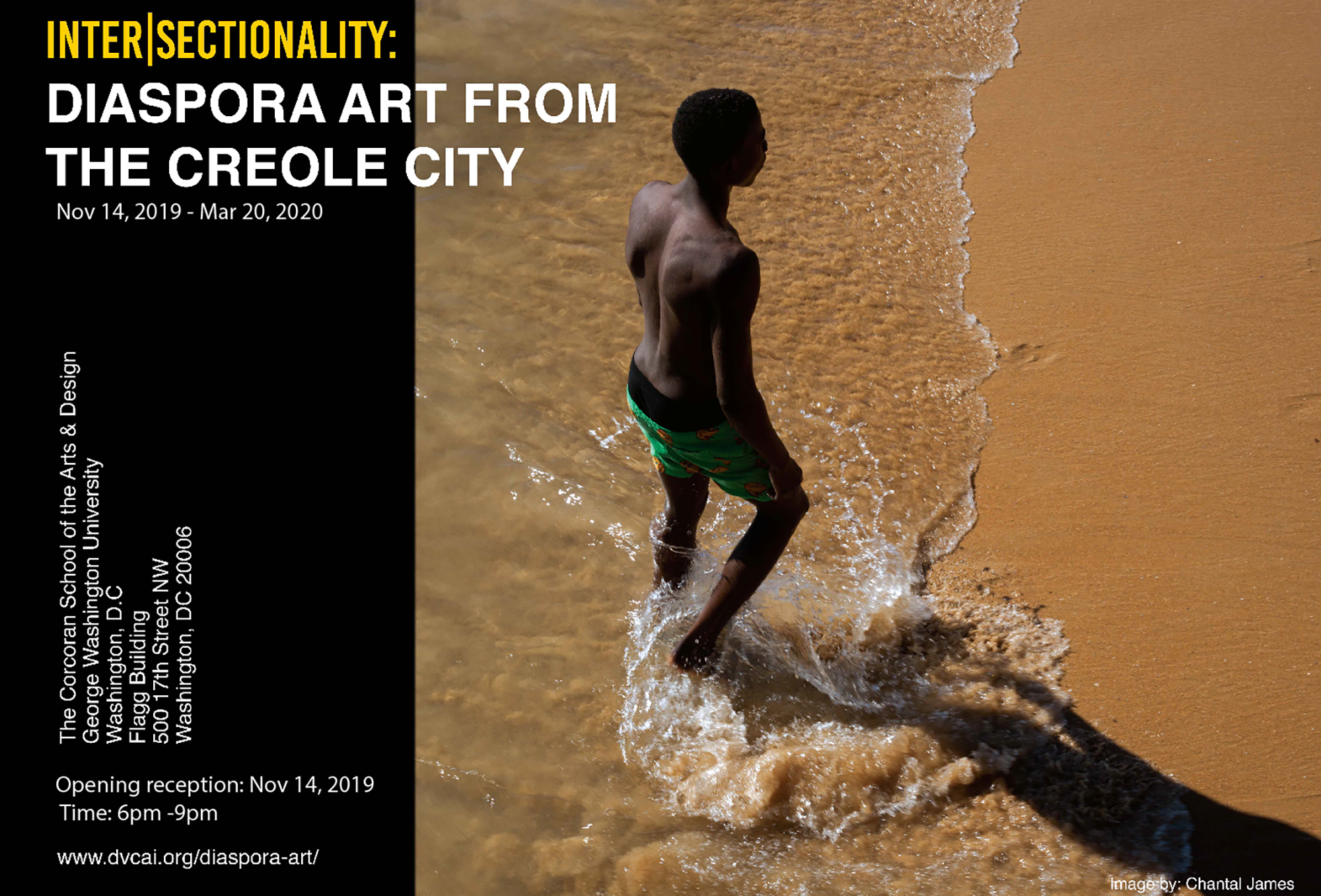Art from the Miami diaspora—sculptures, paintings, fiber art, photography and performances—find its way to the nation’s capital through an exhibition opening at the George Washington University’s Corcoran School of the Arts and Design. “Inter | Sectionality: Diaspora Art from the Creole City,” a collection of works from Miami-affiliated artists, explores the emergence of Miami as the “Creole City” and diaspora art as a local, regional and global phenomenon.
“We are pleased to host ‘Inter | Sectionality’ at a time when diaspora artists and voices are advancing social justice, celebrating identities and reactivating and bridging communities through contemporary art and scholarship,” Kym Rice, interim director of the Corcoran School, said.
Dr. Rice believes this Miami-focused exhibition in D.C. provides the public an opportunity to recognize and celebrate the complexities of their own creolized identities, a unique cultural DNA that is evident in the languages and histories of GW’s international students and audiences who speak Spanish, French, Dutch and Creole, as well as indigenous, Asian and African dialects.
“The complexities and diversities represented by this exhibit are emergent, and in many cases ascendant, across the world,” Rosie Gordon-Wallace, a co-curator of the exhibition, said. Ms. Gordon-Wallace founded the Miami-based Diaspora Vibe Cultural Arts Incubator, which collaborated with the Corcoran School on the exhibition.
Since its inception in 1996, the incubator has functioned as a laboratory to promote, nurture and cultivate the vision and diverse talents of emerging artists from the Caribbean diaspora and other artists of color from immigrant experiences.
“At a time when global cities are aligning themselves with the technology industries, Miami’s dynamic cultural arts scene attracts diverse international artists and reveals complex intersectional stories of access and inclusion,” Donette Francis, the director of the American studies program at the University of Miami and a collaborator at the incubator, said.
The exhibit highlights the work of 25 Miami-affiliated artists along with two guest artists and is grouped around themes that encompass diaspora and “Creole City” life stories, memory, politics, myth, religion and culture. A diaspora is a group of people with a similar background scattered beyond the boundaries of that community. Artists with works on display include:
Aisha Tandiwe Bell, a first-generation Jamaican and ninth-generation traceable Black American. Conceived in Tanzania and born in Manhattan, she was raised Bobo Shanti Rasta, spending her early childhood on Bobo Hill in Bull Bay, Jamaica. Inspired by the fragmentation of our multiple identities, MS. Bell’s practice is committed to creating myth and ritual through sculpture, performance, video, sound, drawing and installation.
Caroline Holder, who was born in England to a Jamaican mother and Barbadian father. When she was 4 years old, the family returned to the Caribbean, settling in Barbados, where she completed her formative education. Her influences include a background in printmaking, a love of pen and ink drawing, experience of intersectional identity as a Caribbean immigrant in North America, and the life-altering experience of late motherhood.
Jared McGriff, a Los Angeles-born artist based in Miami. His figurative oil and acrylic paintings capture the expressions, cultural ques and the ephemeral familiarity of his surroundings. His works are at once accessible and universal in their depiction of the human condition.
Deborah Willis and Tyler Mitchell, a renowned professor and her acclaimed former student, are the exhibition’s guest artists. Their artworks created a conversation about intergenerational artistic voices.
Deborah Willis is the chair of the department of photography and imaging at the Tisch School of the Arts at New York University. She has co-organized thematic conferences exploring imaging the black body in the west since 2006. Her works in this exhibition are digital prints and two-channel video called “Reflections on Joan Baez’s Civil War.”
Tyler Mitchell is an Atlanta born photographer and filmmaker now based in Brooklyn, N.Y. In 2018 he made history as the first black photographer to shoot a cover of American Vogue. In 2019 one of Mr. Mitchell’s portraits of Beyoncé were acquired by the Smithsonian Institution’s National Portrait Gallery. Mr. Mitchell will show photography pieces.
The exhibition and related programs were made possible with leading support from The John S. and James L. Knight Foundation, The Andy Warhol Foundation for the Visual Arts and The Ford Foundation. The exhibition also received the support of the Miami-Dade County Department of Cultural Affairs and the Cultural Affairs Council, the Miami-Dade County Mayor and Board of County Commissioners, Institute of Museum and Library Sciences, National Performance Network and State of Florida Division of Cultural Affairs. Presented by and in collaboration with Diaspora Vibe Cultural Arts Incubator, Inc. and The George Washington University’s Corcoran School of the Arts and Design.


